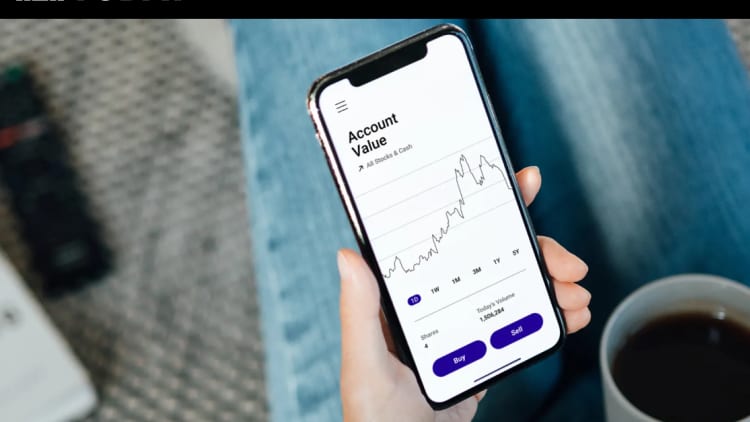Konstantin Trubavin | Cavan | Getty Images
Investor psychology can be fickle. Consider this common scenario: The stock market hits a rough patch, and skittish investors bail and park their money on the sidelines, thinking it a “safer” way to ride out the storm.
However, the math suggests — quite convincingly — that this is usually the wrong strategy.
“Getting in and out of the market, it’s a loser’s game,” said Lee Baker, a certified financial planner and founder of Apex Financial Services in Atlanta.
Why? Pulling out during volatile periods may cause investors to miss the market’s biggest trading days — thereby sacrificing significant earnings.

Over the past 30 years, the S&P 500 stock index had an 8% average annual return, according to a recent Wells Fargo Investment Institute analysis. Investors who missed the market’s 10 best days over that period would have earned 5.26%, a much lower return, it found.
Further, missing the 30 best days would have reduced average gains to 1.83%. Returns would have been worse still — 0.44%, or nearly flat — for those who missed the market’s 40 best days, and -0.86% for investors who missed the 50 best days, according to Wells Fargo.
Those returns wouldn’t have kept pace with the cost of living: Inflation averaged 2.5% from Feb. 1, 1994 through Jan. 31, 2024, the time period in question.
Markets are quick and unpredictable
In short: Stocks saw most of their gains “over just a few trading days,” according to the Wells Fargo report.
“Missing a handful of the best days in the market over long time periods can drastically reduce the average annual return an investor could gain just by holding on to their equity investments during sell-offs,” it said.
More from Personal Finance:
What the SEC vote on climate disclosures means for investors
Investing early may help younger workers avoid retirement worries
Don’t be enticed by the gold rally, expert says
Unfortunately for investors, it’s almost impossible to time the market by staying invested for the winning days and bailing ahead of losing days.
Markets can react unpredictably — and speedily — to unknowable factors like the strength or weakness of a monthly jobs report or inflation reading, or the breakout of a geopolitical conflict or war.
“The markets not only are unpredictable, but when you have these moves, they happen very quickly,” said Baker, a member of CNBC’s Advisor Council.
The best and worst days tend to ‘cluster’
Part of what also makes this so tricky: The S&P 500’s best days tend to “cluster” in recessions and bear markets, when markets are “at their most volatile,” according to Wells Fargo. And some of the worst days occurred during bull markets, periods when the stock market is on a winning streak.
For example, all of the 10 best trading days by percentage gain in the past three decades occurred during recessions, Wells Fargo found. (Six also coincided with a bear market.)
Some of the worst and best days followed in rapid succession: Three of the 30 best days and five of the 30 worst days occurred in the eight trading days between March 9 and March 18, 2020, according to Wells Fargo.
“Disentangling the best and worst days can be quite difficult, history suggests, since they have often occurred in a very tight time frame, sometimes even on consecutive trading days,” its report said.
The math argues strongly in favor of people staying invested amid high volatility, experts said.
Getting in and out of the market, it’s a loser’s game.
Lee Baker
certified financial planner and founder of Apex Financial Services in Atlanta
For further proof, look no further than actual investor profits versus the S&P 500.
The average stock fund investor earned a 6.81% return in the three decades from 1993 to 2022 — about three percentage points less than the 9.65% average return of the S&P 500 over that period, according to a DALBAR analysis cited by Wells Fargo.
This suggests investors often guess wrong, and that their profits dip as a result.
“The best advice, quite frankly, is to make a strategic allocation across multiple asset classes and effectively stay the course,” Baker said.










